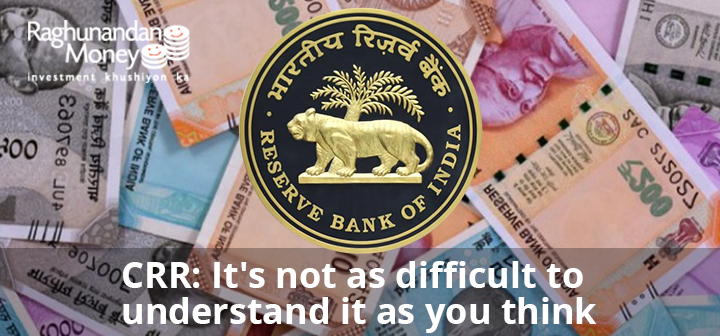Published : May 1, 2020

Cash Reserve Ratio (CRR) is the ratio of the total cash that banks required to keep as a reserve with Reserve Bank of India (RBI) in the form of liquid cash. Maintenance of Cash Reserve Ratio (CRR) is defined in section 42(1) of the Reserve Bank of India (RBI) Act, 1934. CRR is used to control the money flow in the market. Suppose there is more money supply in the market than Reserve Bank of India (RBI) increases the CRR which will cut short the money supply in the market. And if there is less money in the market then the RBI may reduce the CRR to push money into the market. The current CRR is at 4% in India. The maintenance of CRR has to be on a daily basis.
Reserve Bank of India keeps some part of deposits from banks with itself in the form of Cash Reserve Ratio which enhances security. CRR is used as a tool to control the inflation in the economy. The Cash Reserve Ratio works as reference rates to determine the base rate. There is a minimum lending rate below which banks are not allowed to lend money that is called base rate. Reserve Bank of India (RBI) determines the base rate. The base rate is fixed which ensures transparency and this rate is also helpful in cutting down on the cost of lending for providing affordable loans.
Cash Reserve Ratio is the main component to control the money supply, level of inflation, and liquidity in the market. High Cash Reserve Ratio reflects in low money supply in the market and low CRR reflects more money supply in the market. The impact of CRR is explained below in details-
If we look at the inflation perspective, the more money with the banks due to lower Cash Reserve Ratio results in more money supply in the economy. More money supply in the economy results in an increase in inflation in the economy.
The stock market will also be impacted by a reduction in the cash Reserve Ratio in a positive way. The more money supply in the market and with banks will result in easy availability of money for investors and traders. The more money with investors and traders will result in more liquidity in the stock market.
An increment in Cash Reserve Ratio results in less money with the banks as they have to keep more money with the RBI now. It means that banks would have less money to play with and the loans distribution of the banks will also decrease. The interest rates at which banks distribute loans might also increase.
The increment in loan rates will result in less money supply in the market. Consumers will borrow less on higher interest rates and conclusively spend less. The lower expenditures by consumers will result in lower demand in the market. Lower demand in the market will curb inflation in the economy.
The stock market will take this action in a negative way as less money with the banks leads to less money for investors. The less money with investors and traders will result in less liquidity in the stock market.
Conclusion:
Cash Reserve Ratio (CRR) is one of the very important tools for controlling money flow in the economy. It also enhances the security among depositors that some part of their saving is kept safe with the RBI. CRR is widely used by central banks all around the world. As Cash Reserve Ratio is maintained only in cash form this makes it different from other money flow controlling tools like Statutory Liquidity Ratio (SLR). As some portion of the money of depositors is always kept with RBI, this gives safety to depositors. In case of immediate need of cash to banks, Cash Reserve Ratio plays a very important role in the functioning of the banking system.

Enjoy flexible trading limits at
lowest brokerage rates ?
Open Your Investments Account Now
0Account Opening Charges
Life Time Demat AMC
Brokerage







Ensure the security of your investments by updating your nominee details in your trading & demat account online. It’s quick and hassle-free!
📌 Act Now to Stay Compliant
For assistance, contact our Customer Care at 0562‑4266666 and email askus@rmoneyindia.com.

IT'S TIME TO HAVE SOME FUN!
Your family deserves this time more than we do.
Share happiness with your family today & come back soon. We will be right here.
Investment to ek bahana hai,
humein to khushiyon ko badhana hai.
E-mail
askus@rmoneyindia.com
Customer Care
+91-9568654321